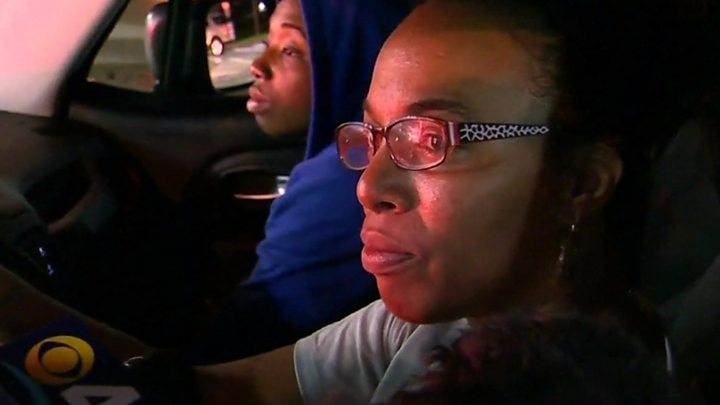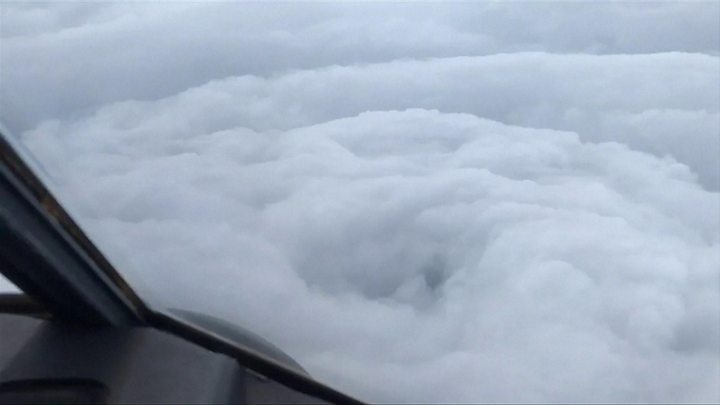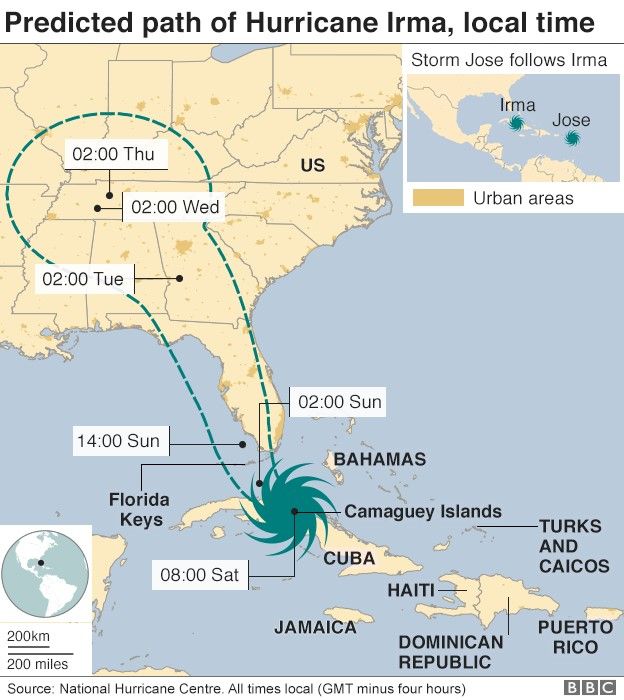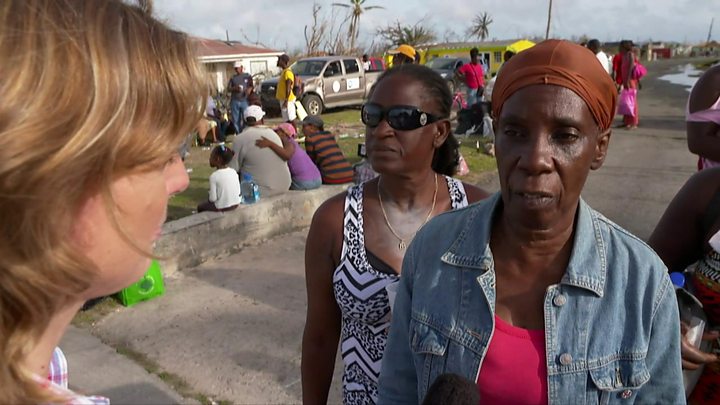
This article is more than
8 year oldHurricane Irma: Florida braces for storm arrival
Water levels are already rising on the coast of the US state where a huge storm surge is expected.
Some 6.3 million people had been told to evacuate, but the state governor said on Saturday it was now too late to leave for anyone remaining.
At least 24 people have died after Irma earlier hit several Caribbean islands.
With maximum sustained winds of 120mph (193km/h), Irma hurricane has now weakened to a category three hurricane after making landfall in Cuba's north-east late on Friday, the National Hurricane Center (NHC) says in its latest advisory at 03:00 GMT on Sunday.
But Irma is expected to strengthen and will remain a powerful hurricane as it approaches Florida, the NHC says.
It warns that a "life-threatening storm surge" is expected in the Florida Keys - a chain of small islands in Florida's south - and also the west coast of Florida.
- Staying behind is 'almost like suicide'
- 'I have never been so scared in my life'
- The deadly danger from Miami's cranes
- Hurricane Irma: A visual guide
What is happening in Florida?
Irma is predicted to hit the coast on Sunday morning, but the outer bands are already affecting the south of the state and central Miami is being lashed by heavy rain.
The Florida Keys have suffered some minor damage and are expected to bear the brunt of the storm in the coming hours.
The head of emergencies agency Fema, Brock Long, told CNN there were "no safe areas within the Keys".
"You put your life in your own hands by not evacuating," he added.

"If you're in an evacuation zone, you've got to get to a shelter need to get to a shelter... there's not many hours left", Florida Governor Rick Scott warned residents.
"The winds are coming, there is not gonna be a lot of time now to be able to drive very far."
- Staying behind is 'almost like suicide'
- 'I have never been so scared in my life'
- The deadly danger from Miami's cranes
- Hurricane Irma: A visual guide
Thousands of people on the mainland are currently without electricity.
The western Gulf coast is expected to be worst affected, with cities such as Tampa and St Petersburg in the path of the storm.
The Tampa Bay area, with a population of about three million, has not been hit by a major hurricane since 1921.
Gov Scott said storm surges in coastal areas could be as high as 15ft (4.6m), adding that people "cannot survive this".
- Barbuda races to escape second hurricane
- UK's hurricane response 'found wanting'
- In pictures: Irma ravages Caribbean
He said that storm surges in coastal areas could be as high as 12ft (3.7m), adding that people "cannot survive this".
Some 50,000 people have gone to shelters throughout the state, the governor said. Media reports say shelters in some areas have been filling up quickly and some people have been turned away.

Miami city and Broward county have imposed curfews to help clear the roads of traffic.

Which other areas have already been hit?

- Cuba: Officials have reported "significant damage", without giving further details, but said there were no confirmed casualties yet, the AFP news agency reports
- St Martin and St Barthelemy: Six out of 10 homes on St Martin, an island shared between France and the Netherlands, now uninhabitable, French officials say. They said nine people had died and seven were missing in the French territories, while two are known to have died in Dutch Sint Maarten
- Turks and Caicos Islands: Widespread damage, although extent unclear
- Barbuda: The small island is said to be "barely habitable", with 95% of the buildings damaged. Antigua and Barbuda Prime Minister Gaston Browne estimates reconstruction will cost $100m (£80m). One death has been confirmed
- Anguilla: Extensive damage with one person confirmed dead
- Puerto Rico: More than 6,000 residents of the US territory are in shelters and many more without power. At least three people have died
- British Virgin Islands:Widespread damage reported, and five dead
- US Virgin Islands: Damage to infrastructure was said to be widespread, with four deaths confirmed
- Haiti and the Dominican Republic: Both battered by the storm, but neither had as much damage as initially feared
What about Hurricanes Jose and Katia?
Another storm, Jose, further out in the Atlantic behind Irma, is now a category four hurricane, with winds of up to 145mph.
It is following a similar path to Irma and already hampering relief efforts in some of the worst affected areas.
Residents of Barbuda, left the island as Jose approached but it is no longer expected to hit.
However, hurricane warnings are in place for St Martin and St Barthelemy, both also hit by Irma.
Hurricane Katia, in the Gulf of Mexico, a category one storm with winds of up to 75mph, made landfall on the Mexican Gulf coast in the state of Veracruz late on Friday.
It has now weakened to a tropical depression.




